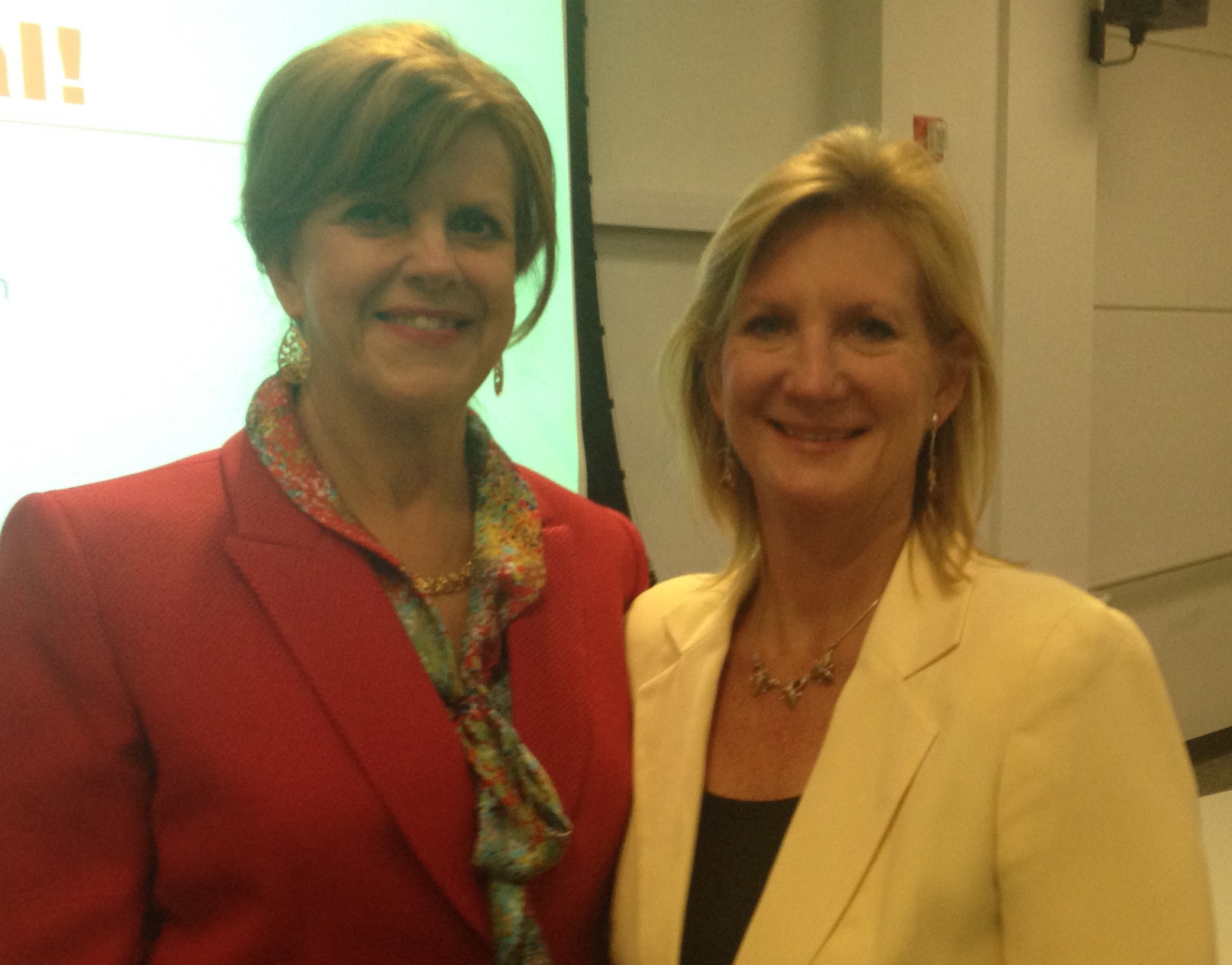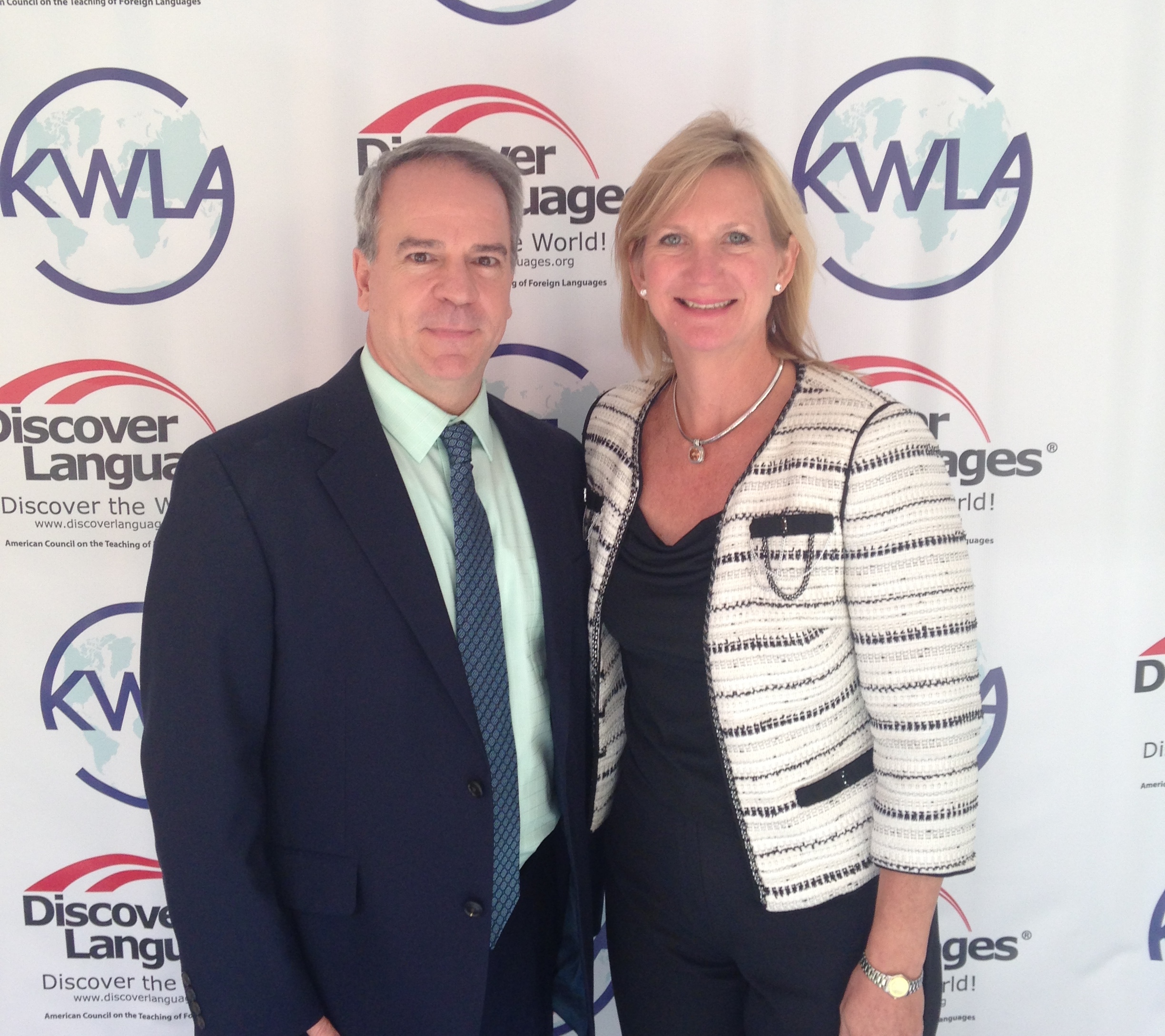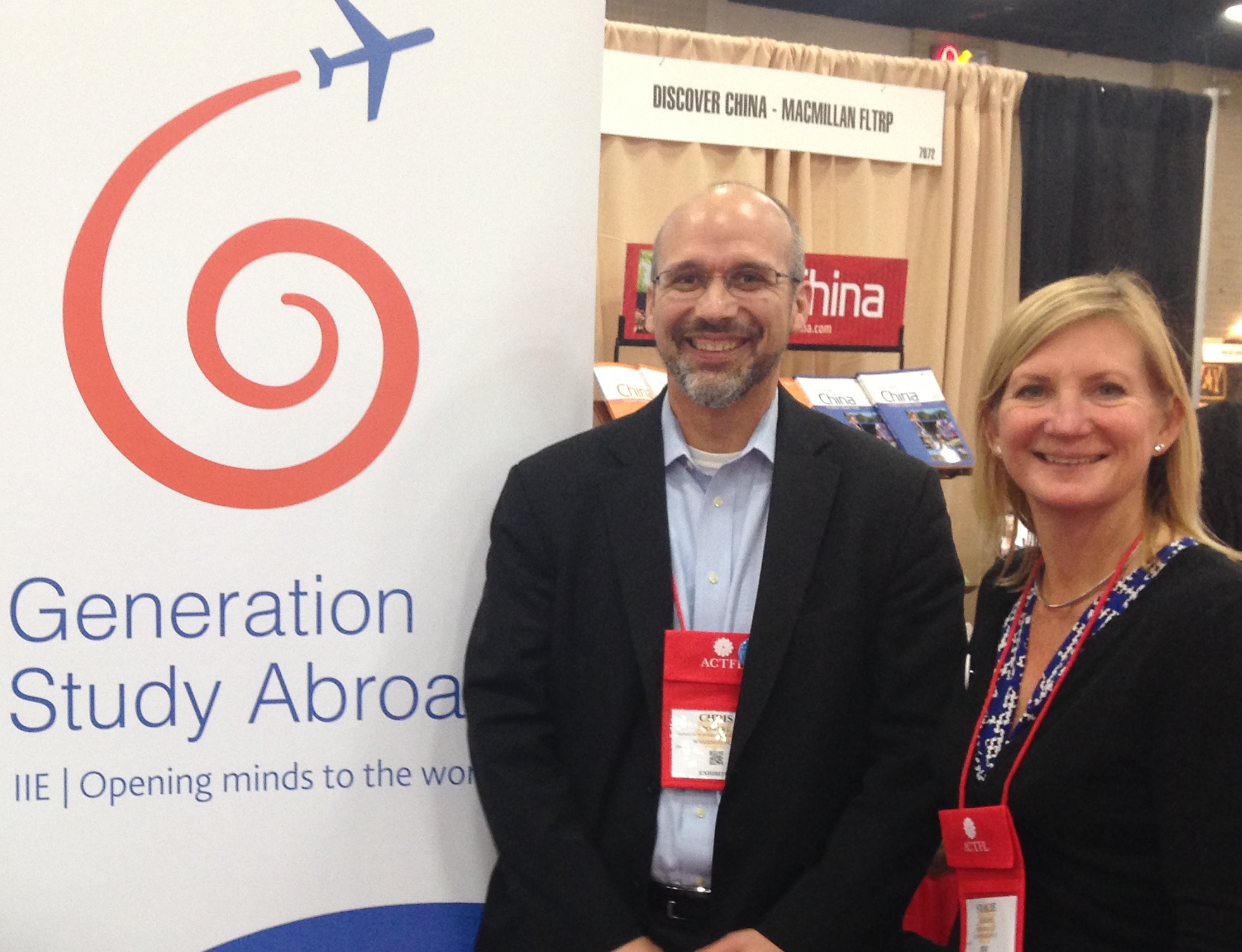A Brief Q&A on Study Abroad-related Costs
Posted on Sep 24, 2015
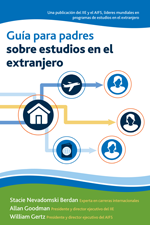
An abbreviated version of this Q&A was posted on Reuters and ran in Time‘s Money section, as well as many others.
I’m often asked about the costs and the value of study abroad, by parents, students as well as reporters. In response to a reporters’ recent questions, I provided the following answers but — as you can see — my answers are long, longer than what can usually fit into a typical online news framework. Rather than let the work go unread, I decided to share it here in the hopes that it answers some questions with the goal of having you investigate, if you’re interested. For more information, pick up a copy of either A Student Guide to Study Abroad or the best-selling (so exciting!) A Parent Guide to Study Abroad (just released in Spanish).
What is the range of costs parents can expect for a study abroad program?
The cost of studying abroad varies greatly depending on numerous factors including the type and location of the program, the length of stay, whether the program is administered through a university or an outside provider, or if a student enrolls directly in a foreign university. As such, there is no feasible range to quote. As a parent, I understand that price matters a great deal. But as a business woman, I recommend parents look at the value of the experience and its return-on-investment, or ROI. It makes much more sense to view study abroad as a component that enhances a student’s overall education, begin identifying the best programs, and then compare costs. This requires your child to focus on the educational aspects of study abroad as opposed to the destination. Too many students guided by campus and program advisers ask “Where do you want go?” instead of “How will this enhance your degree and ability to get a job?”
What particular countries tend be more affordable and, conversely, more expensive for study abroad?
Again, it depends on the type of program. Generally speaking, Western European countries such as England, Italy and France are inherently more expensive than developing countries such as Peru, Senegal or Thailand. The difference has to do with the host country’s overall standard of living and the overall cost of basic goods and services. For example, the price of studying abroad for a semester in the Dominican Republic and staying with a host family versus going to Paris and living in an apartment is going to vary quite a bit. But again, to illustrate the wide variability, airfare to one of the developing countries noted above combined with the required immunizations may increase the overall cost. It’s just not possible to answer this question in a vacuum.
Are there any steps you recommend parents take to help shave some costs?
One, do your research. All programs are neither equal in cost nor overall benefits to a student. Compare and contrast programs, read the fine print and talk to other parents. You will need to commit a significant amount of your own time to review the vast amounts of material available. But it’s worth it.
Two, investigate scholarships within your community, at your place of business, and at your child’s college or university. Every year tens of millions of dollars are given to students to study abroad from local rotary clubs to nationally competitive programs like the Fulbright. Most colleges and universities with study abroad offices have a wealth of information about the various forms of scholarships available from a variety of sources.
Three, look into the option of having your child enroll directly in a foreign university, which usually requires withdrawing from his or her home college for the semester or year. This is usually the cheapest alternative, and significantly so, and offers your child an opportunity for real independent learning on a global scale. But it is not without its risks. It requires a great deal more time commitment and independence on the part of your child than a university-led program. Your child will need to manage almost everything from applying for and confirming a student visa prior to departure to making sure that transcripts are sent and credits approved back on his or her home campus.
Four, once your child is on the ground, there are plenty of ways to save money such as opening a local bank account, getting a cheap local phone, living like a local, using public transportation wisely, and setting a budget (and sticking to it).
Does your study abroad affect your financial aid or is there additional aid or scholarships a student can qualify for?
Any financial aid your child is currently receiving from his or her university should be transferrable to a study abroad program run by or affiliated with that university, since the tuition you are paying to study abroad probably goes directly to your home university. Some institutions let students use financial aid for non-affiliated, credit-granting programs. It’s best to check directly with the school’s financial aid office. Federal financial aid can be applied to any program as long as credit is earned and the university accepts the transferred credits. Again, it’s best to check with the sources on campus.
With respect to scholarships, every year tens of millions of dollars are given to students to study abroad, but they are competitive and require students to apply well in advance. Generally speaking there are five types of study abroad scholarships: merit-based and student-, destination-, program- and subject-specific. Most colleges have a straightforward framework for applying to these scholarships. In addition, there are U.S.-Government sponsored scholarships and fellowships such as the Benjamin A. Gilman International Scholarship for students of limited financials means; Fulbright U.S. Student Program designed to provide for mutual exchange between the U.S. and 140 participating countries; Critical Language Scholarships for Intensive Summer Institutes offering fully funded language instruction and structured cultural enrichment experiences; and Boren Awards for International Study offering students the opportunity to study in regions of the world critical to the U.S. yet underrepresented in study abroad. Plus there is an increase in scholarships being offered by foreign governments and numerous study abroad providers as a direct results of the IIE Generation Study Abroad campaign. IIE also offers the most comprehensive listing of study abroad resources online at www.studyabroadfunding.org.
Can a student work while abroad?
Yes, but the local laws must be followed with regards to a working visa. There are two distinct benefits of working abroad. One is earning extra cash, and other is the added experience of working in another country. This experience can offer economic insights into a country as well as open up a wide range of intercultural experiences he or she might not have on campus.
What sort of insurance changes or additions should be made before sending a child abroad?
If your child is on your health insurance policy, keep them on and call your representative to find out if additional coverage is necessary. At the same time, look into the medical insurance being offered by the study abroad provider to be sure it properly covers your child and that he or she completes the necessary paperwork prior to departure. Most countries around the world do not accept U.S. medical insurance and may demand cash prior to treatment if one does not have international traveler’s medical insurance.
Are there any sorts of bank account or credit card changes that parents or students should make?
If your child is going to be studying for at least a semester or a year, consider opening a local bank account so he or she has better access and won’t be charged transfer fees. Another option is to open a U.S. based account with international branches (depending on the study abroad location) or a U.S. bank that allows for free ATM withdrawals and no foreign transaction fees – same with credit cards. Credit cards are important and provide a means for your child to use less cash, but check the study abroad location to find out if the security chip is used in credit cards as opposed the magnetic strip.
If you son or daughter is on your cell phone plan, can they remain on it? Should you drop their line in favor of some sort of local carrier to where they are going? Any other recommendations?
Cell phones are a good idea to have, but your child should be using them on a local basis not for calling back to the U.S.; Skype is the obvious free option. Although parents should check their carrier’s plan for coverage, most students tend to either buy a local SIM card to use in their U.S. phone (check to make sure it’s compatible) or buy a cheap, local cell phone and SIM card. They won’t really need their U.S. music or movie lists as they should be immersing themselves in local culture.
On this point of communication and technology, parents should not expect their child to communicate regularly, nor should students spend much time on social media. It’s important for the students to immerse themselves in their new home culture to soak up as much learning as possible. Skype every few weeks is enough.
Are there areas in which families typically spend money when their kids are traveling abroad that ends up being a waste? If so, what areas are they and what should be done alternatively?
One of the most important things parents can do is to help their child create a budget for their time abroad and encourage him or her to track their expenses on a regular basis, getting familiar with the local currency. For some students, using foreign currency does not always seem like “real” money, which can lead to budget-busting problems. Since many students like to travel while abroad, a great study abroad benefit, staying in-country, or maybe taking excursions every now and then, is usually cheaper and students get the benefits of actually living in a country, soaking up the local culture and spending less money, as opposed to being part student, part traveler. If a student is just interested in the travel portion and not ready for the academic commitment, consider a roundtrip ticket and a backpack as a much cheaper option until he or she is ready.
Should you send the student with cash? If so, in what currency, and should it be limited?
Traveling with some cash (a few hundred dollars) is a good idea, enough to get your child to their ultimate destination combined with some emergency funds, but not enough to make loss or theft a major catastrophe. It’s much wiser and safer to use ATM cards, or even pre-loaded debit cards with pin numbers. U.S. dollars are best and any currency exchanges should take place in-country upon arrival, not prior to departure, where lower rates and transaction fees are usually charged.
Study Abroad Could Be So Much Better
Posted on Jul 2, 2015

This opinion piece on study abroad was originally published in the Chronicle of Higher Education.
The number of American students studying abroad is on the rise, and that is a very good thing. But more than just increasing the numbers, colleges would be well advised to take a hard look at their study-abroad programs to ensure that they are providing students with a quality international-study experience at an affordable price. Too many programs are unnecessarily expensive, and many of them don’t help students acquire the cross-cultural skills necessary for long-term career success across a broad spectrum of fields.
Today’s students increasingly recognize that study abroad is one of the best ways they can acquire the valuable international experience necessary to work in the 21st-century global marketplace. What they don’t realize is that all study-abroad programs do not help them equally in this respect. In an effort to satisfy the growing demand for international experience, colleges naturally highlight their commitment to global education. But how global are they?
Far too many institutions seem to equate global education with study abroad; many of them have established “centers” for global education or global studies that function primarily as the study-abroad office. Although studying abroad is an important component of global education, true global education encompasses much more.
Certainly, any time spent studying abroad is valuable and can help a student become more globally competent, but programs vary widely in their ability to help students gain the depth of knowledge that should come with true global learning. Research conducted over the past 10 years and discussed in the 2012 book Student Learning Abroad: What Our Students Are Learning, What They’re Not, and What We Can Do About It, edited by Michael Vande Berg, R. Michael Paige, and Kris Hemming Lou, shows that far too many undergraduates who study abroad are not learning and developing in ways that were common as recently as a decade ago.
One of the shortfalls identified in the book is the lack of engagement — both before students go abroad and after their return — between professors (or study-abroad leaders) and students, with the intention of explaining and helping students interpret their experiences. This interactive process is just as crucial to students’ cross-cultural learning as the experience itself. Although colleges try to prepare students by providing orientations, suggesting websites to visit, and recommending country-specific information to review, this is not nearly enough to prepare students for the experience they are about to have.
Research I conducted in conjunction with the Institute of International Education for A Student’s Guide to Study Abroad indicated that only one-fourth (out of a total of 350 students on more than 250 campuses) of students were provided with any cross-cultural training before they left, while only a little more than one-third were offered the names of fellow students who had gone to the same host country. And only one-fifth of respondents to my survey said they had been offered books or travel guides with cultural information specific to the country or region to which they would be traveling. Mandatory re-entry or reintegration classes were reported as minimal, although many colleges encouraged students to join re-entry gatherings.
These statistics are troubling. When students go abroad, they land not only in another country but in another culture. It can’t be seen, but it can be felt: different values, behaviors, beliefs, and attitudes shared by a society and shaped by its environment. The culture is expressed in feelings, judgments, and mental constructs that are typically subtle in nature. If students don’t know to be aware of culture, they won’t be able to respond appropriately, perhaps even inhibiting their ability to communicate.
To that end, all study-abroad programs should mandate cross-cultural preparation, training, and reintegration programs — but far too many don’t.
In an effort to determine why not, I followed up with many study-abroad offices and administrators. Not surprisingly, cost is a big concern. The programs are already expensive, and to add training by cross-cultural experts before and after is deemed to be prohibitively so. Time is another factor; both the limited time students have before leaving and that of the overstretched departments advising students before they go abroad and helping them upon their return.
But perhaps most unsettling was that many study-abroad advisers and administrators didn’t think anything more than the general orientations and returnee welcomes already being provided were necessary. This directly contradicts what academic research has shown and what thousands of students have told me over the years.
The vast majority of students I have asked about cross-cultural preparation said they wished that they had been better prepared to deal with cultural differences when studying abroad. When I asked why, most said they felt confused by interactions with local people and didn’t understand what was happening in social situations. Many of the students I interviewed said they felt so uncomfortable that they increased the amount of time they spent with fellow Americans and on social media with friends and family back home — the opposite of what they should have been doing.
Most students reported even greater difficulties and lack of support upon returning home. They felt less comfortable with their new selves on their old campuses and had trouble reintegrating. They didn’t understand how to leverage their experiences abroad to help them in their remaining studies and in their lives after graduation, whether academically or professionally.
Many students reported feeling frustrated in their relationships with friends and family, often feeling isolated and alone. Although most students seemed to muddle through, chalking up the strenuous readjustment to part of the learning curve, it doesn’t — and, in fact, shouldn’t — have to be that way.
Students expect college to prepare them for the workplace that awaits them after graduation, and the study-abroad experience is an increasingly important component of that preparation. But to truly help their students become global citizens, colleges must integrate study abroad into a broader global-education curriculum instead of treating it as a one-off adventure.
Now Available! A Parent Guide to Study Abroad
Posted on May 13, 2015
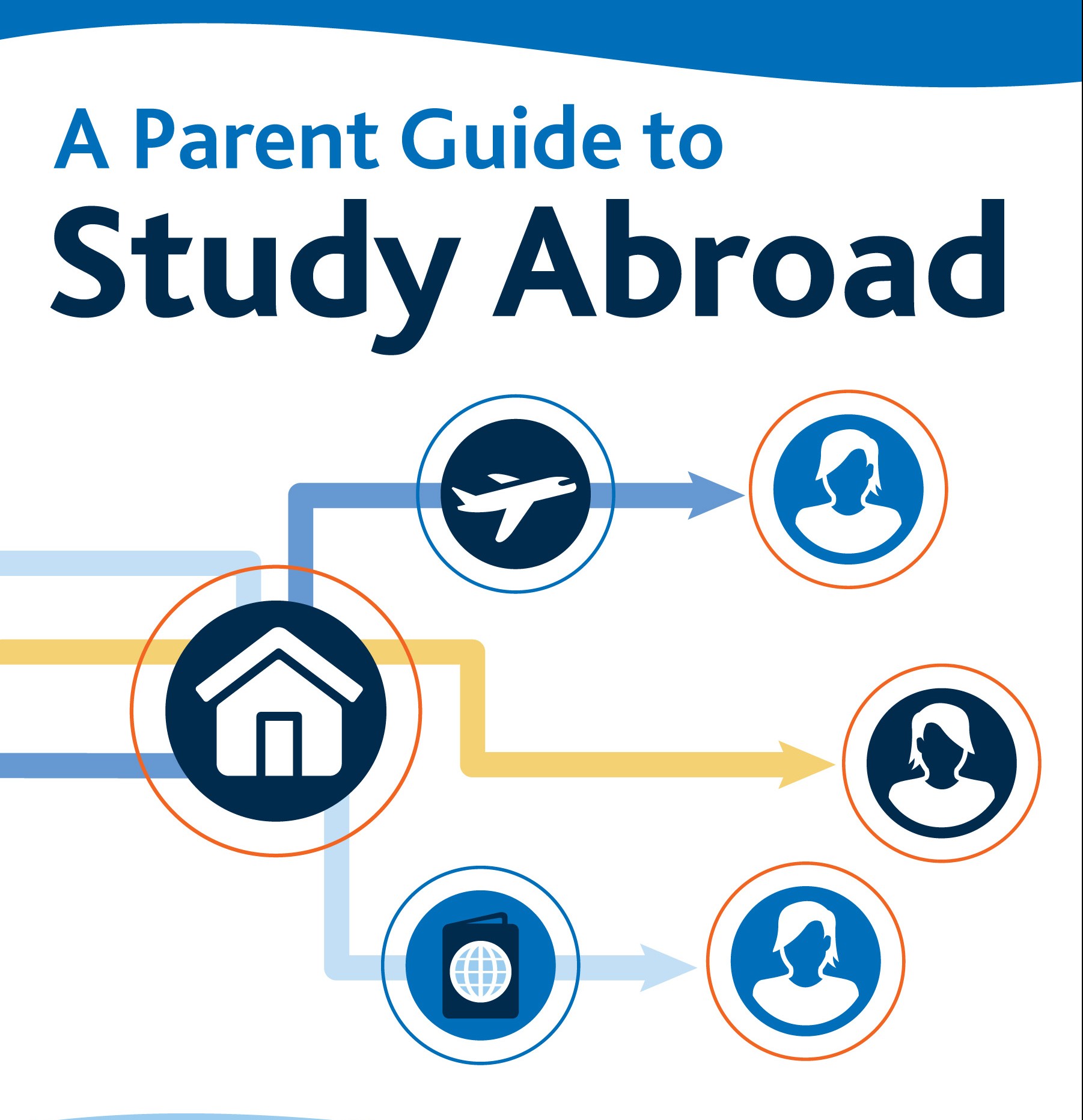
Parents play a critical role in helping their child identify, prepare for and leverage the study abroad experience, but many do not know how to be most effective. Highlighting the importance of knowledgeable yet limited involvement, international careers expert Stacie Nevadomski Berdan, IIE president Allan Goodman, and AIFS president William Gertz, coauthors of A Parent Guide to Study Abroad, have written the first-ever book that arms parents with the right mix of practical information to get involved just enough, while also giving the students the independence to learn and grow on their own.
Released just in time for graduation season and college students’ summer break, A Parent Guide to Study Abroad offers much-needed straight talk on how parents can and should participate in one of the most important decisions of their children’s academic career. This short guide is a must-have for families seeking to better understand the ins and outs of study abroad and how it enhances a student’s path to success in college and beyond. It is a companion volume to the popular book A Student Guide to Study Abroad. Both books are published by the Institute of International Education and the American Institute for Foreign Study Foundation.
“Studying abroad opens our children’s eyes to new ways of thinking about the world. It helps our children learn to solve problems in cross-cultural contexts and supports critical thinking skills,” say Berdan, Goodman and Gertz. “Studying abroad is also one of the best ways for our children to acquire international experience, an increasingly important component to a college graduate’s resume. Parents should do everything they can to encourage their children to study abroad.”
Recognizing that parents are part of what makes education better in every community and at almost every level, the authors make a strong case for the importance of parental involvement that can influence and shape a successful cross-cultural experience, including:
- Clarifying the value of investing in study abroad
- Identifying the right study abroad program
- Figuring out the financials
- Preparing for success abroad
- Staying safe and healthy abroad
- Offering the appropriate mix of support
- Helping your child leverage the experience for personal and professional success
“In today’s interconnected world, one of the best gifts we can give our children is to help them develop a global mindset so that they will be best positioned for success in our competitive, global marketplace,” say Berdan, Goodman and Gertz. “Each of us has either guided, or is currently guiding, our own children to pursue international experiences.”
Print copies of A Parent Guide to Study Abroad are available from www.iie.org/publications for $4.95, with a steep discount for bulk copies for schools to give out to parents (20 copies for $20.00). A Student Guide to Study Abroad can be ordered for $14.95, with discounts of 30%-50% for bulk orders.
Raising Awareness: People on the Thai-Burmese Border
Posted on Jan 27, 2015 Leave a Comment

Recently in school I have studied the conflict in Burma and the situation of the Karen people in both Hartford and Thailand. Since 1948 Burma has had the longest ongoing civil war in world history. The Karen people, an ethnic minority are being persecuted by the Burmese military government. Originally, the British occupied Burma until the Japanese invaded and tried to take over the country in World War II; the Karen sided with the British and were promised independence from the Burmese after the war, while the Burmese allied with the Japanese. After the war, the British never gave the Karen their independence and left complete control of the country to the Burmese, who began persecuting the smaller ethnic groups such as the Karen, forcing them to flee into Thailand and eventually being relocated around the world.
I met some of the Karen refugees currently living in Hartford. Their stories touched me; these people, through no fault of their own, are living such hard lives. Meeting them reminded me yet again how lucky I am.
This coming March I am fortunate enough to travel to Thailand to work at a refugee camp and medical clinic by helping conduct patient interviews and providing medical supplies. I’m also planning to visit a local school to bring supplies and teach English.
In order to make a bigger difference, I am raising money for Burma Children Medical Fund (BCMF) which provides transportation and medical help to refugees. Any donation, no matter how small, can make a huge difference in the lives of less fortunate in southeast Asia. A $25 contribution can cover the costs for one patient to be transported to a medical clinic, taking the first step towards the treatment he or she may need. My goal is to raise $2,500 which would provide medical treatment for 10,000 people for six months. 100% of your donation will go directly to help the Karen people.
I feel as though the Karen people have been abandoned and forgotten throughout history, so not many people know of their terrible plight. I hope to make a small difference by fundraising, volunteering, and raising ongoing awareness of their situation. If you’d like to donate, you can do so three ways by Feb. 28:
- Donate online and get a US tax deduction: http://burmachildren.com/get-involved/how-to-donate/us-donations/ But in order for your donation to count toward my goal, you will need to send an email to michael@burma-projects.org and kanchana@burmachildren.com with a cc to stacienberdan@gmail.com and include my name and your contribution amount.
- Send a check made out to Burma Border Projects and either mail directly to them (Burma Border Projects, PO Box 20173, West Side Station, Worcester, MA 01602), or to me and I can mail it in. If the former, note that the donation is to go to the Burma Children Medical Fund (BCMF) and include my name so I get credit toward my goal. You can ask for a receipt for tax purposes.
- Send a check or cash to me. BCMF has requested that I buy supplies on the ground for the school and clinic, so all donations will not go through BCMF.
Once in Thailand, I will be posting photos and updates on social media, so for those who donate, send me your email so I can share the links! Thank you very much!
Sincerely,
Betty Berdan
Satellite Campuses and the Study Abroad Experience
Posted on Jan 26, 2015

The full “Room for Debate” can be found here.
Most companies expand internationally in order to grow their market share and increase revenue. The same applies to universities as many have jumped on the global bandwagon by setting up satellite campuses at various overseas locations, often ones subsidized by local governments. While I’m not opposed to U.S. universities expanding overseas, I worry that they limit students’ study abroad opportunities, don’t provide an in-depth cultural immersion and restrict academic freedom.
Study abroad is more than taking classes to learn about globalization and how it affects one’s field and career.
Although U.S. students attending these satellite campuses are actually living in the host country, they’re still part of the American education system. Generally speaking, they are taught by American professors who include an international or local component to their subject material. But all too frequently, the whole experience is more American than international. In order to experience a different approach to teaching, learning and the classroom environment, U.S. students should be encouraged to take classes not offered on their home campus at local universities that are taught by local professors. This will fully immerse them in an international educational experience and enable them to work through the cultural differences that will help prepare them to work later with colleagues, supervisors and clients from different backgrounds. This local academic environment should be further enriched by an immersive living experience, possibly with a host family.
The same is true for local students who attend these American university satellite campuses. They just aren’t experiencing the deep cross-cultural immersion that is the goal of international exchange. And while it can be argued that many students would not otherwise attend an American university were it not for these outposts, sitting in a classroom surrounded by local students is not even close to matriculating on a U.S. campus. The American professor may be a thought leader on a subject, but the environment is still local. And since many of these new expansions are taking place in wealthy, emerging markets such as China, the United Arab Emirates and Singapore, the government subsidizations have an impact on the university, similar to restrictions felt by companies that have been expanding around the world recently. (Google is a good example.)
Study abroad is more than taking classes to learn about globalization and how it affects one’s field and career. It’s also about self-discovery and stepping outside your comfort zone. It’s about navigating different systems, making yourself understood in another language and/or cultural context, and dealing with the unknown – or at least a completely new and different experience. Satellite campuses just can’t offer that to the same degree.
Media Praise for Raising Global Children!
Posted on Dec 10, 2014
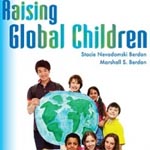
I’ve had some great reviews of Raising Global Children in the last few months:
On its blog “Worldview” — a place for leaders in the fields of language education, global citizenship, immersion learning — Concordia Language Villages writes “this book explores the challenges and successes of many Americans who want to foster an important set of global skills in their children to help them both become better citizens and increase opportunities for success in college and beyond.” Read the full review.
For the Huffington Post, Amelia Friedman, founder of the Student Language Exchange, writes that Raising Global Children “excites me not just because of the rich, research-based explanation of the importance of developing a global mindset, but also because of its potential to activate parents and educators as instigators of change. Furthermore, it equips these folks with the tools they need to educate and inspire kids of all ages.” Read the full piece.
Middlebury Interactive Languages did the first of a two-part series on how language learning contributes to raising global children, noting that “Raising Global Children makes a compelling case for why language proficiency is not a luxury for the privileged but a necessity for all American youth.” Read the Q&A.
Concordia, Student Language Exchange and Middlebury Interactive agree that language learning matters and the sooner we start teaching our children the better off they — and we as a nation — will be.
Go Global News Round Up
Posted on Dec 9, 2014 Leave a Comment
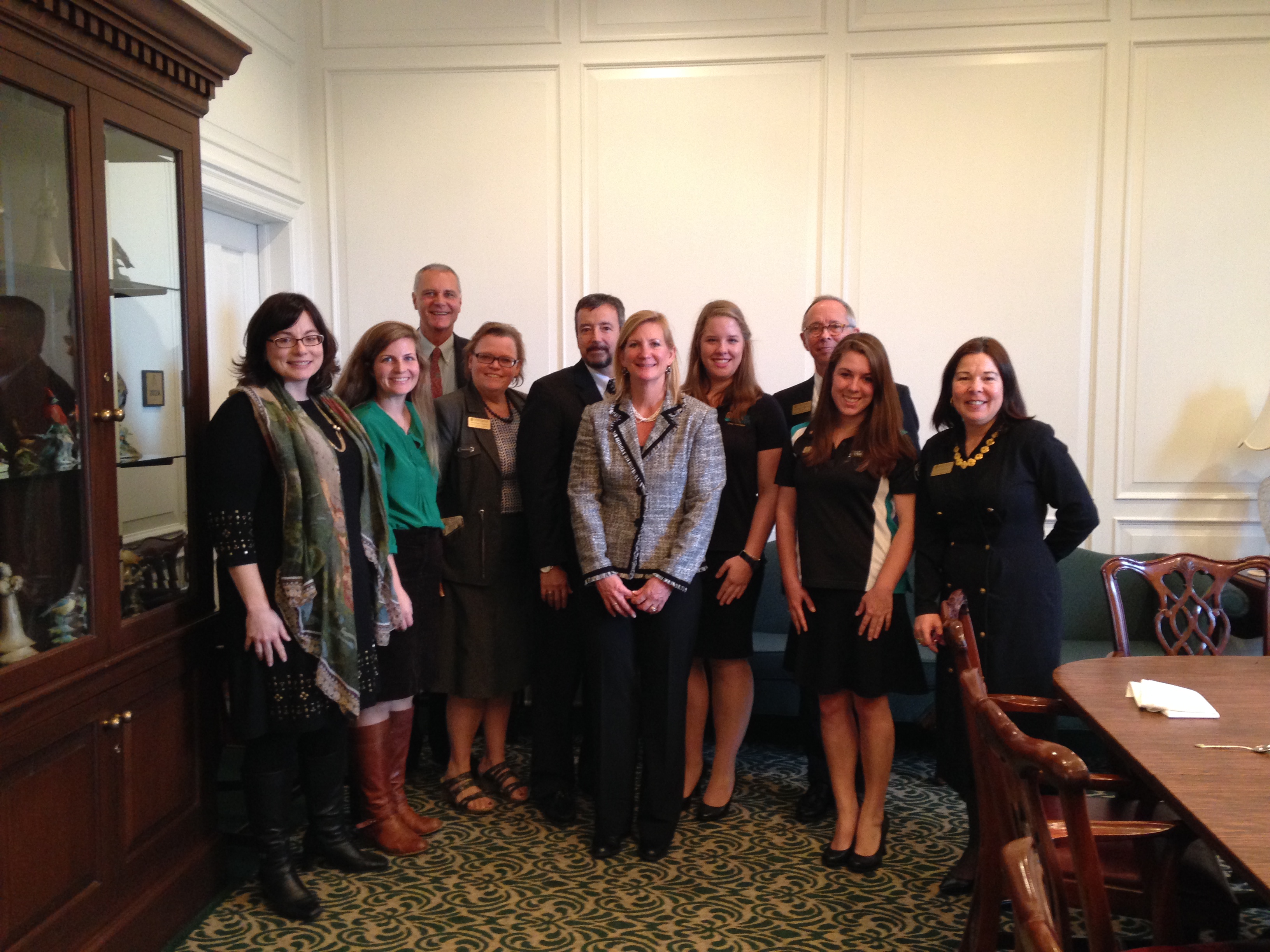
It’s been a very busy fall for me speaking and writing, and I haven’t had as much time as I would have liked to share what’s new. So I’ve decided to do “news round up” of sorts here.
I kicked off the school year with a trip to Kentucky where I gave several talks in Paducah (KCTCS and McCracken County Schools) — where I was honored with the title “Duchess of Paducah” by Mayor Gayle Kaler and did a local NPR interview with WKMS Kate Lochte — and Lexington on topics ranging from raising global children to global careers. One of these talks was the keynote for KWLA’s annual conference, where I met Randy Barrette who is a passionate HS teacher who brings his global experience into the classroom every day.
I returned to GWU to give a keynote at the Women in MBA leadership dinner, where with the inspirational leadership of Teal Griffey, President of the local chapter of Women in MBAs and the super CIBER team, we created a terrific forum for a limited number of female MBA students to discuss global careers one-on-one with an amazing group of international women, followed up at Emory’s Executive Women of Goizueta’s (sold out!) annual event in Atlanta, where Ivonne Monteagudo of Mead Johnson and I spoke about global risk: challenges and opportunities of an international career.
Then it was on to International Education Week at Coastal Carolina University, Georgia Institute of Technology, Sacred Heart University, University of Toledo and Baylor University where I spent about a week and half in total on campuses talking about the importance of developing a global mindset, studying abroad, learning another language and global careers. Faculty and staff were so welcoming and the students had so many great questions!
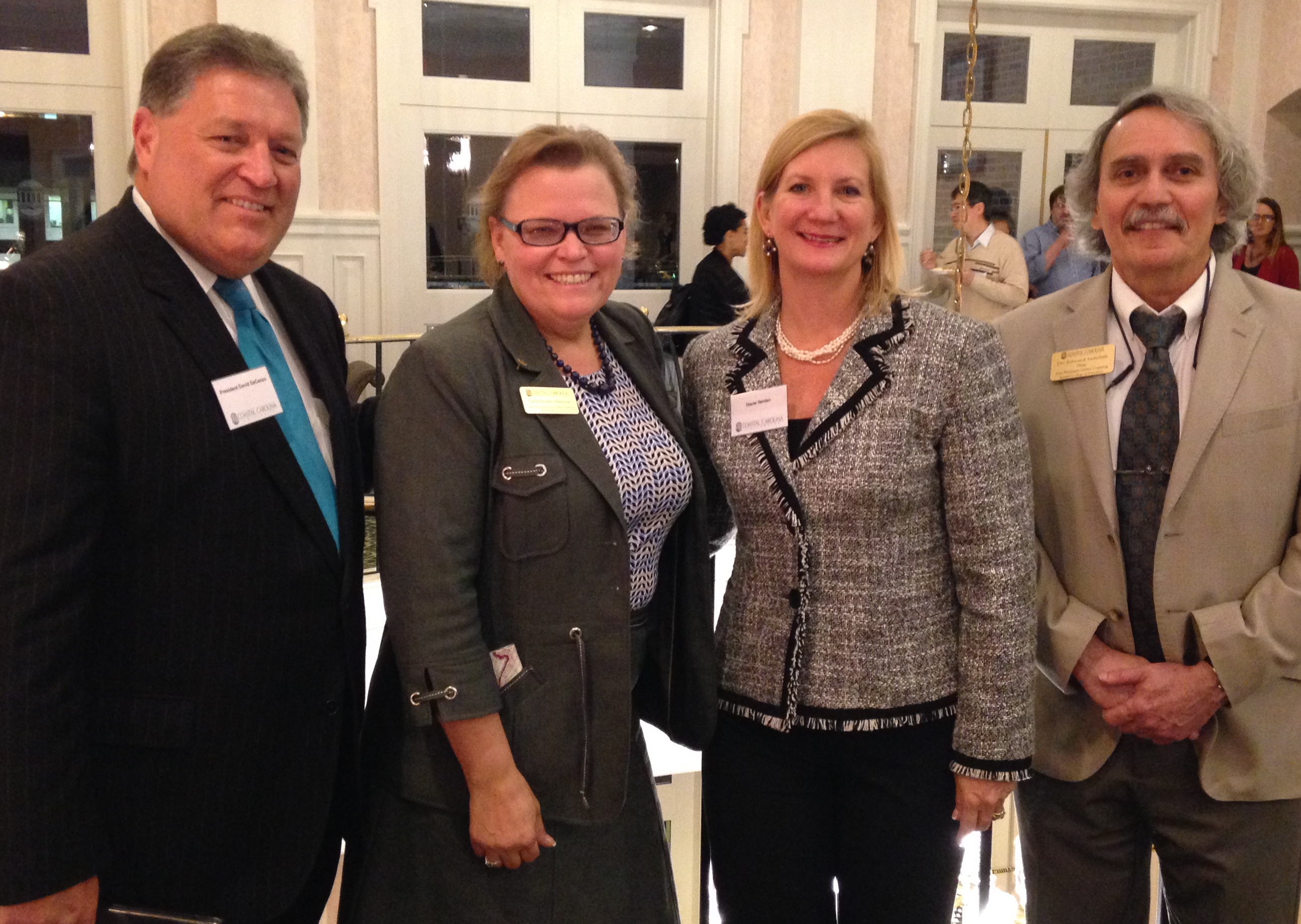
With CCU President David DeCenzo, Associate Provost Darla Domke and Dept. of Ed Dean Professor Ed Jadallah
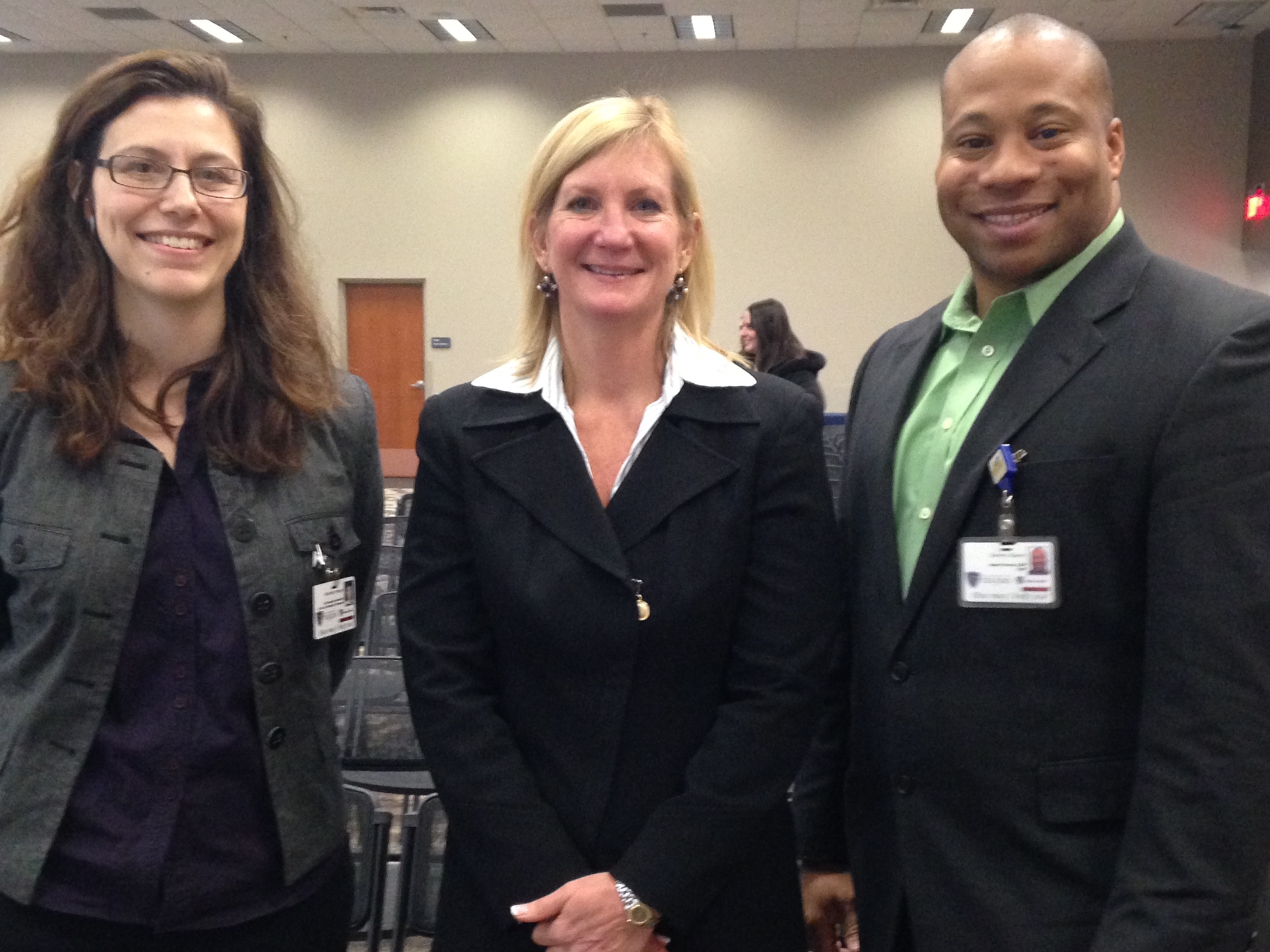
With U of Toledo’s International Education Specialist Michelle Ploeger, and Associate Provost Sammy Span.
As IEW wrapped up, I was fortunate to spend it at ACTFL’s annual convention, this year in San Antonio, where I was part of the Institute of International Education’s Generation Study Abroad Team. Partnering with IIE’s Chris Powers, Glastonbury Public School’s Rita Oleksak and Concordia Language Village’s Carl-Martin Nelson, we made a strong case linking language learning k-16 and study abroad. GENERATION STUDY ABROAD!
Kids Having Fun with Food: A Global Adventure
Posted on Nov 11, 2014 Leave a Comment

We first experience the world through our mouths. To the consternation of parents and older siblings everywhere, babies stuff whatever they can reach into their maws, then lick, gum, or chew, experiencing all kinds of flavors, textures, and shapes, before spitting or swallowing as they wish. We begin as oral explorers, and parents can take advantage of that by providing their children with richly varied tastes.
Savvy parents have long advised against an over reliance on commercial baby and especially toddler foods, which tend toward soft blandness and hence discourage the development of adventurous palates. Instead, while still following all the schedules for introducing new foods recommended by pediatricians, parents can feed babies chopped or ground versions of all the foods they themselves eat—to the benefit of the baby’s health and tastebuds, not to mention their parents’ wallets. By toddler age, kids can eat most of what the rest of their family eats, just chopped smaller and without the spiciest of spices.
By introducing children to a variety of cuisines at an early age, they are exploring other parts of the world and learning about other cultures through a necessary function, so why not make it fun and interesting?
Once you have a small child eating essentially the same foods as parents and older siblings, you have all the ingredients you need for family culinary adventures. Here are some tips for making your first such forays successful:
- Start with favorites and expand. If Junior already likes grilled cheese, it’s a simple stretch to quesadillas. Pureed spinach and cut-up cheese isn’t far from saag paneer. Spaghetti lovers will probably welcome Chinese or Japanese noodles.
- Introduce new ingredients one or two at a time so as not to overwhelm.
- Remember that young palates are delicate, so go easy on salt, fiery hot spices, and other strong tastes.
- But do use spices, letting babies and toddlers smell them and appreciate the colors before gradually introducing them as tastes.
- Keep recipes simple at first or purposefully omit nonessential ingredients. It’s often easier for kids to start with only a handful of ingredients, then work their way up to complex foods such as casseroles and stews.
- Cook together! There is nothing like putting on a chef’s hat and helping mix, pound, and roll the ingredients to get a child interested in eating the end result.
- Whenever you can, secure your ingredients from a farmer’s market or pick-your-own farm. Better still, grow them yourself. The more a child feels connected to where his or her food comes from, the more interesting that food will seem.
- Make new foods festive by using interesting colors, shapes, and layers. Sushi, burritos, dumplings, spring rolls, empanadas, blintzes, stuffed cabbage, and layered salads can encourage even picky eaters to try new things.
- Decorate food whenever you can. Kids can be big on presentation, which can also be a great kid activity while an adult handles the sharp knives and hot stove.
- Expand fun and learning opportunities by organizing themed evenings with food, a story, some music, and maybe a game from the same country.
- Be sure to include cuisines to which your family has a personal connection, such as special dishes from your ancestral home country or places where you have spent time, so that stories about the place can reinforce the pleasure of the new foods.
- Expand your repertoire by using global cookbooks and by searching websites for creative ideas on global cooking with kids. A few of my favorites are Global Gourmet, Cooking with Kids, and Epicurious.
Restaurants can be wonderful shortcuts to culinary adventure, especially when you don’t have the time to cook or just want something different. Restaurants featuring ethnic cuisines frequently offer some of the best and freshest food around, typically in settings with music, art, and other cultural artifacts that can ignite a child’s imagination. But don’t stress out too much about authenticity. Even jumbled exotica can offer fun and flavorful inspiration for kids.
Try not to let any restaurant visits deteriorate into demands for the blandest items on the menu. Gently encourage trying new things via tastes from grown-up plates or a selection of interesting, kid-friendly appetizers. Whenever possible, avoid the greasy, salty and/or over-sweetened dishes so often featured on “kid’s menus.”
Once you have cultivated a reasonably adventurous eater, you’ll find that both family meals and travel become much easier. A child who has learned to like real food as much as—and hopefully even more than—chicken nuggets and French fries is a child better prepared to explore the world.
For a related piece on Cooking Revolutionary Food, see my piece on Huffington Post.
Making the Most of it Maxims: Living & Working Abroad
Posted on Oct 28, 2014
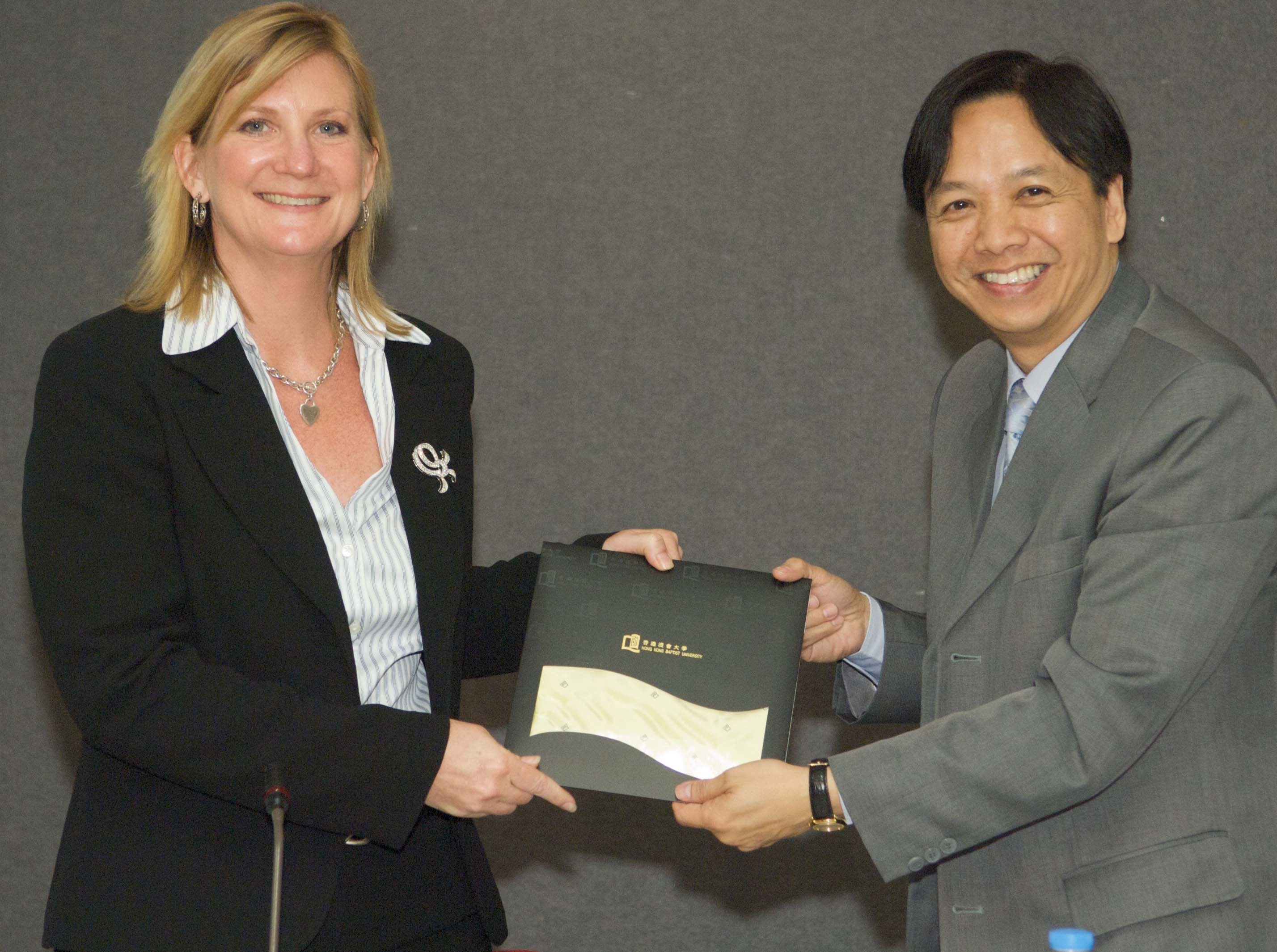
Women look to make the most of their experiences abroad, but it isn’t easy to operate in a new foreign environment right away. Making mistakes is natural, functioning at top speed can be overwhelming, and settling in to make things happen takes time. There won’t be enough hours in the day to resolve the numerous paradoxes or complex problems you’ll encounter while working abroad. But you’ll have to do so anyway. After you’re a few months into the groove – perhaps by the end of the first year – you’ll be wiser to the local ways. You’ll come to realize that many of the difficulties you encounter are due to who you are – not who your new compatriots are. But this new life is not what you’re used to, and it’s imperative to keep this point in mind.
In fact, I recommend that you spend a small amount of time, right in the beginning, figuring out the best way for you to keep improving. Once you get into the groove, the pace runs at breakneck speed, so here’s a list of practical tenets called “Making the Most of It Maxims,” based on my research with hundreds of international women working around the world. It is critical that you understand them as you begin the journey and refer back to them often, even posting this list somewhere where you will read it every morning before you start your day. You can tape it to your bathroom mirror or turn it into a book mark to slip into the magazine, newspaper, or book you are currently reading. Becoming familiar with each maxim will make it easier for you to accept that you are who you are, while keeping front and center the importance of understanding your new environment as quickly and effectively as you can. You want to do more than just get by; you want to be as successful as you can be.
“Making the Most of It” Maxims
Remember that you are the guest and therefore may need to modify your style.
Figure out what the cultural norms are in social and business environments.
Accept that paradoxes are part and parcel of the international adventure.
Don’t be too hard on yourself when you make mistakes.
Draw on your female management style.
Keep a positive attitude.
First, succeeding abroad usually depends on effectively adapting your behavior to coincide with local norms. Is there something in your style that you should tone down or amplify? What aspects of your character or traits will enable you to make every new impression a positive one? First impressions matter, and you will be creating lots of them. To make sure your substance shines through, every day ask yourself who you’ll be meeting, what they are like, and whether there is something you can and should do to enhance the interaction.
Second, things are not always as they seem, look, or even sound. Be cautious, take note, and if something happens that seems strange or contradictory to you, ask one of your local guides. You must learn the written and unwritten rules, which may vary by industry, hierarchy, and culture. Pay attention, ask questions, and figure out how things are done in your new environment. Reading books on culture shock can advance your knowledge in this area. An ounce of preventive embarrassment could save you pounds of mortification.
Third, cross-cultural life presents a bounty of situations in which you will find yourself facing apparently contradictory positions. These paradoxes can inhibit your ability to perform your job well if you cannot deal with them effectively. For example, you will probably arrive with some preconceived notions of your host culture. You will observe that all people do not share these “traits,” and you will overlook them for some people while still believing them for the greater population. These two “truths” will need to live side by side in your mind, and you will learn to accept them and many others. Accept that, at the very least, you will at times feel confused and, at the extreme, close to certifiable! The self-contradictory nature of the paradox can do this to you. But if you let it, it can also strengthen your mind. [Note: dealing with paradox is a critical skill those in leadership roles must have, so learning to master this is a great advantage.]
Fourth, cultural mistakes and misunderstandings are inevitable. Learn from your blunders so you don’t make them again, and be just as understanding when others make mistakes, too. Don’t be afraid to publicly laugh at yourself; laughter can be a great equalizer and ice-breaker.
Fifth, the style and manner with which women seek solutions often gives us an advantage over our male counterparts in cross-cultural situations. For example, leverage your ability to build teams into a strong and powerful network across borders. Use your excellent communication skills to listen effectively and enable you to resolve tricky business situations in unfamiliar territory. Make the most of every single day.
Finally, keep a positive attitude. Some days will be more difficult than others, and you will need additional fortification. Devise a system that keeps your tank full, as it were, whether it’s a daily workout routine, meditation in the morning, fresh flowers, the promise of regular travel, or contact with friends or family. Take care of yourself to ensure an upbeat and optimistic approach to the overall experience.
If you can follow these “Making the Most of it Maxims,” you will a great living-abroad experience that you can look back on in years to come.
Global Education Is Proven to Be Better General Education
Posted on Sep 18, 2014

Neither global education nor learning a second language is a component of the standard American school curriculum. But that doesn’t mean it is wise policy. Even without including foreign language learning, research on global education shows that it also benefits general education by supporting critical thinking, especially in terms of encouraging a consideration of multiple perspectives, a skill identified in much research as supporting success across a range of academic disciplines and careers. The reflective practices and consideration of varying perspectives that well-designed global education programs foster have been demonstrated to support analytical skills in all areas of education.
Effective global education programs can also encourage brain development by helping children come to grips with questions of personal, community, and national identities. Some researchers have found that the complex perspective issues that naturally arise in global education can assist with “open-ended, creative problem-solving,” and with the ability to “reflect on contexts,” useful skills not just for global life and work, but here in the United States too.
With respect to foreign language education, the benefits are especially clear. Decades of research have amply demonstrated that learning foreign languages:
- Supports academic progress in other subjects;
- Narrows achievement gaps between different demographic student populations;
- Aids both basic skills and higher order, abstract, and creative thinking;
- Enriches and enhances cognitive development (especially if done early);
- Enhances student’s sense of achievement;
- Improves scores on standardized tests;
- Promotes cultural awareness and competency;
- Improves chances of college acceptance and achievement;
- Enhances career opportunities; and
- Benefits understanding and security in one’s community and society.
Dr. Allan E. Goodman, President & CEO of the Institute of International Education, says “Young Americans will depend on and most likely work in a world far beyond our borders. Early exposure to different languages and cultures prepares young people for the constant transformation that will be required in their future careers. Acquiring the kind of intercultural communication skills that today’s employers value will offer them an economic, as well as intellectual advantage. Having the opportunity to learn about other countries at a young age—and even better, to prepare them to study abroad as part of their college education—opens students’ eyes to a new way of thinking about the world, instilling a more informed approach to problem-solving in cross-cultural contexts. Whether their ultimate career interests lie in public service, business, science and technology, academia, arts and culture, or any combination of the above, the global perspective gained through international education will serve today’s students well throughout their lives.”
Raising Global Children
In order to give our children the best opportunity to thrive in the new global world, we need to give them a global education. Working together, teachers and parents can raise global children, expanding their personal horizons while opening up a world of personal and professional opportunities.
When it comes to specific advice on how to raise globally minded children, we recognize that not only do we all live in different geographic locations, we are all at different stages in our lives financially, emotionally, and globally. Some of you may already be engaged in raising globally aware children and are looking for additional ideas to supplement your actions. You may have younger children, teenagers, or a mixture of ages. Or you may not even have children yet, but are interested in learning how best to prepare for their arrival. Others may understand the need for—and excitement of—opening the world for your children, but have little international experience and are unsure where to turn for resources. Some of you may even be afraid that your own lack of global awareness will be a barrier to helping your child become the globally aware individuals that you know they need to become. We all have different means and desires and so each person’s approach to raising global children will be a little different.
We imagine that for every parent who already has the means to encourage global thinking, there are probably 100 who appreciate the value, but have little global awareness themselves. And you may not live in a town or even a part of the country that has much access to multicultural learning opportunities. No one has all the information to answer the variety of questions about lifestyles and paths, so it’s best to tap into a network of globally minded people for insight, ideas, and inspiration. Whatever you’re looking for on the spectrum of raising global children, this book is filled with proven parenting strategies, practical tips, and real-life examples culled from the experiences of hundreds of globally minded individuals and families.
The Cost of a Global Education
Some people think that raising global children is only for the well off. This is not true. Raising global children does not have to cost much money, nor does it require hundreds of hours of free time. The single most important part of raising global children is to instill in them the right attitude. Traits such as curiosity, empathy, compassion, and flexibility cannot be bought, they must be taught. To be sure, travel, ethnic restaurants, and cross-cultural museum exhibits can enhance a child’s global mindedness. But so, too, can the treasure trove of books, music, movies, magazine, and maps available at the local public library. Our point is not to advise you to pile on the costly extracurriculars, but to enjoy exploring the world with your child in the many different ways highlighted throughout this book. Incorporate an idea or two into your schedule as you see fit, and think long-term about the actions you can take to help your child become more globally aware. And while some things suggested here do indeed cost a lot of money, there are plenty that don’t cost much, and others that don’t cost anything at all. Just by reading this book you have expressed an interest in the topic, which is far and away the essential first ingredient in raising a global child.
